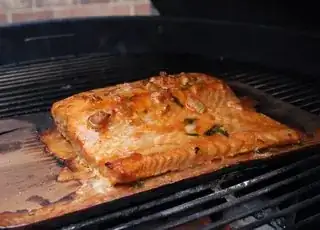my local restaurant served me recently some wild salmon (slice) from the grill. It tasted delicious, but was pretty dry.
I'm aware that wild salmon has much less fat. So I'm wondering, is there any preparation or cooking technique for barbecuing wild salmon on the grill to avoid that the fish gets dry?
note: Placing the grill a bit higher, is not an option for a restaurant, where they grill several kind of fish at the same time
P.S.: there is a similar question here, but the answers focus on how to cook farmed salmon
